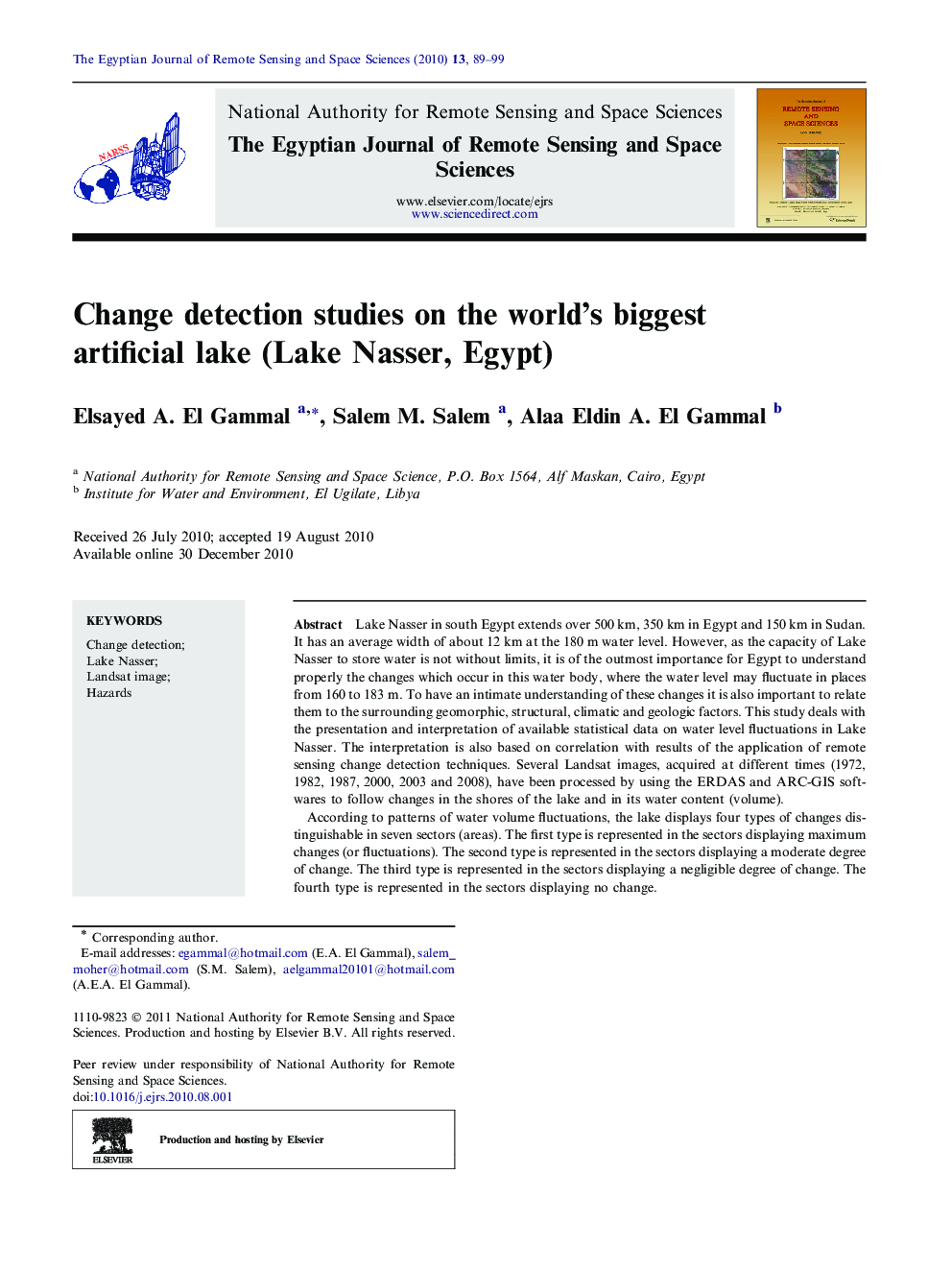| Article ID | Journal | Published Year | Pages | File Type |
|---|---|---|---|---|
| 4681436 | The Egyptian Journal of Remote Sensing and Space Science | 2010 | 11 Pages |
Lake Nasser in south Egypt extends over 500 km, 350 km in Egypt and 150 km in Sudan. It has an average width of about 12 km at the 180 m water level. However, as the capacity of Lake Nasser to store water is not without limits, it is of the outmost importance for Egypt to understand properly the changes which occur in this water body, where the water level may fluctuate in places from 160 to 183 m. To have an intimate understanding of these changes it is also important to relate them to the surrounding geomorphic, structural, climatic and geologic factors. This study deals with the presentation and interpretation of available statistical data on water level fluctuations in Lake Nasser. The interpretation is also based on correlation with results of the application of remote sensing change detection techniques. Several Landsat images, acquired at different times (1972, 1982, 1987, 2000, 2003 and 2008), have been processed by using the ERDAS and ARC-GIS softwares to follow changes in the shores of the lake and in its water content (volume).According to patterns of water volume fluctuations, the lake displays four types of changes distinguishable in seven sectors (areas). The first type is represented in the sectors displaying maximum changes (or fluctuations). The second type is represented in the sectors displaying a moderate degree of change. The third type is represented in the sectors displaying a negligible degree of change. The fourth type is represented in the sectors displaying no change.Factors controlling water fluctuations in Lake Nasser are: (i) presence of granite and Nubia Sandstone outcrops, (ii) NW, E–W and NE structures (mainly faults), arranged in decreasing order of influence, (iii) presence of wide surfaces of low and relatively flat topography, this generates extensive water bodies prone to high evaporation, (iv) sand encroachment, often causing the segregation of narrow sectors in the lake, this can also generate broad sectors with shallow water depth, that does not correspond to the average depth of the water body.
